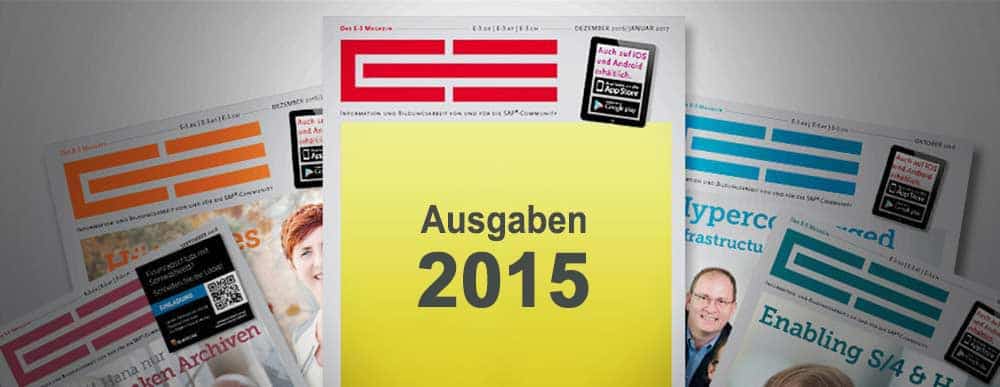Fully automated invoice processing in SAP


The savings potential is enormous: the EU Commission estimates the savings for companies in the EU through electronic invoice processing at 64.5 billion euros per year.
Many companies use OCR solutions (OCR = Optical Character Recognition) to read data from paper invoices and transfer it directly to the accounting system in electronic form.
The paper invoices are first scanned, then an OCR recognition component reads the invoice data so that it can be forwarded to the electronic approval process via workflow.
However, this costly and time-consuming detour is superfluous if the sender and recipient agree on a completely electronic invoicing procedure, be it via EDI (electronic data interchange), EBPP portals (electronic bill presentment and payment), web portals or via e-mail or DE-Mail.
The elimination of paper and postage costs alone makes it worthwhile to send invoices electronically. In addition, there are further cost benefits and numerous optimization options, for example in terms of processing efficiency and transparency.
The greatest savings potential can be achieved on the part of the invoice recipient. This is because the software support is not only effective when invoices are received, but also in all downstream business processes such as checking, data capture and archiving.
Electronic invoice processing is greatly accelerated throughout the entire process. Invoices can also be approved automatically by comparing them with the order data. This saves the recipient a high proportion of processing costs and time, allowing them to take discounts more frequently. Dunning fees are also a thing of the past.
From 27 to 2 minutes
Invoice exchange in PDF/A format reduces the processing time from 27 to 2 minutes. There is currently a strong trend towards standardized invoicing in PDF/A format, as the benefits for both invoice issuers and recipients are high despite the low investment costs.
In addition, more and more suppliers are switching to invoice exchange in PDF/A format as they want to realize the cost benefits and many of their customers in the business and public sectors no longer accept paper invoices. Medium-sized companies in particular should take advantage of this positive situation.
PDF/A files can be easily generated from Microsoft Word or an ERP system and sent by e-mail or DE-Mail. The PDF/A format not only includes an image file, but also a TXT file.
Using simple additional programs, these TXT files can be extracted and made readable for ERP systems. Manual entry of the invoice data or reading out the data with an OCR component is no longer necessary.
Data quality is 100 percent when invoices are exchanged in PDF/A format, compared to around 75 percent when they are captured using OCR components.
As the TXT files are completely transferred to the ERP system, there are no data losses or read errors when invoices are exchanged via PDF/A.
The Federal Ministry of the Interior (BMI) calculated that it takes an average of 27 minutes to process a paper invoice. The electronic exchange of invoices in PDF/A format, which are provided with "header data" for semi-automatic processing, reduces the time required to around five minutes.
For invoices with a purchase order reference, the effort is even reduced to around two minutes if the invoice matches the purchase order. And with very little investment for the invoice recipient.
Fully automated system for invoices and payment advice notes
With the help of a software solution for automatic invoice processing in the SAP system, SAP user companies can process all incoming PDF/A files - such as invoices or payment advice notes - fully automatically.
Such an application generates all booking-relevant data from PDF/A files and forwards them automatically to the SAP system. Additional OCR software or an external service provider is not required.
Processing takes place directly in the SAP system, without media disruptions and interfaces, which ensures 100% data quality. Both manual verification of the data and invoice verification in accordance with Section 14 UStG by the clerk are no longer necessary.
Input errors or the internal loss of invoices are a thing of the past. The editing process starts when the PDF file is received by e-mail. This is followed by legally compliant archiving by saving the corresponding file (e-mail text and the associated PDF) in the archive.
Secondly, processing of the PDF file begins in the SAP system. The data is transferred to an invoice receipt book and automatic pre-assignment takes place.
The solution then determines the responsible recipients and triggers the workflow. Once the invoice has been approved using the workflow, the business case is posted and the SAP document is stored in the archive together with the PDF.
Effort and effectiveness
The switch to PDF invoice processing and the associated acceleration and streamlining of internal company processes benefit not only the employees in financial accounting, but everyone involved in the approval process throughout the company.
The electronic workflow significantly speeds up the entire invoice process. An important advantage is the transparency throughout the entire invoice processing procedure.
The status of each individual invoice can be checked continuously. Copies of invoices, time-consuming searches for the original invoice or even the loss of a document are a thing of the past.
Another advantage is that invoices with a purchase order reference can also be read and automatically processed at item level.
Fast Close
The advantages of PDF invoice processing integrated in SAP are also noticeable for management. For example, companies benefit from a real-time display of current liabilities, as the figures from the invoice receipt are immediately available.
Among other things, this enables more precise liquidity management. Today, external providers of capital such as banks or shareholders expect more information at an earlier stage. However, the inclusion of information from third parties, such as suppliers or customers, is a factor that can significantly delay the closing process.
With the help of PDF invoice processing fully integrated into SAP, this information can be generated, processed and displayed transparently much faster. This saves companies valuable time on the rocky road to fast close.
With the passing of the Tax Simplification Act in 2011, the legislator lowered the legal requirements, but the taxpayer is still responsible for providing the relevant evidence.
When sending invoices by email, for example, the recipient must ensure authenticity and integrity. This must be ensured by an internal verification procedure.
An application for SAP-integrated PDF invoice processing checks compliance with these regulations using a standardized process. The solution enables seamless verification of the entire process from invoice receipt to posting.
In addition, the solution uses an automatic invoice receipt check in accordance with § 14 UStG to ensure that all incoming invoices meet the criteria for entitlement to input tax deduction.
Some companies are still reluctant to change their traditional paper-based invoice exchange. However, the trend towards electronic invoice processing is unstoppable. For example, the EU Commission has called on its member states to establish electronic invoicing as the predominant method by 2020.
Innovative, future-oriented companies are already positioning themselves as pioneers of an expected wave of changeover. Experts are forecasting growth of 30 percent in the area of electronic invoicing in Europe in the coming years. A 20 percent increase is expected worldwide.





